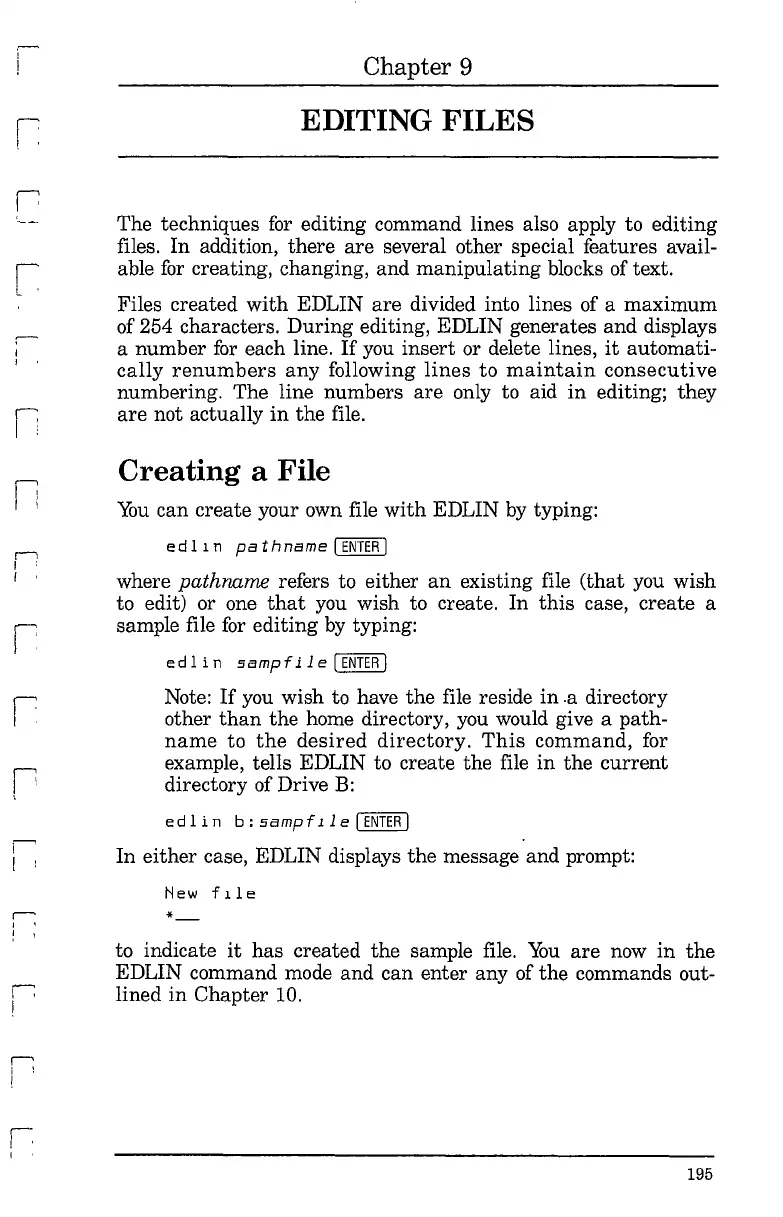,-
~
I '
!
L '
I
I '
r;
I :
n
,..,
I '
, '
r-:
I '
r-'
I '
I
,.......,
!
i '
r-'
I '
~
,
i
I
r
! '
I
Chapter 9
EDITING FILES
The techniques
for
editing command lines also apply to editing
files.
In addition, there
are
several other special features avail-
able
for
creating, changing, and manipulating blocks of text.
Files created
with
EDLIN
are
divided into lines of a maximum
of 254 characters. During editing, EDLIN generates and displays
a number
for
each line.
If
you
insert
or delete lines,
it
automati-
cally
renumbers
any
following
lines
to
maintain
consecutive
numbering. The line numbers
are
only to aid
in
editing; they
are
not actually
in
the file.
Creating a File
You
can create your own file
with
EDLIN
by
typing:
edll
n
pa
thname
I
ENTER
I
where pathname refers to either
an
existing file
(that
you wish
to edit) or one
that
you wish to create. In
this
case, create a
sample file
for
editing
by
typing:
edlin
sampfile
[ENTER
I
Note:
If
you wish to have
the
file reside
in.a
directory
other
than
the
home directory, you would give a path-
name
to
the
desired
directory.
This
command, for
example, tells EDLIN to create the file
in
the
current
directory of Drive
B:
edlin
b:
sampfl1e
I
ENTER
I
In either case, EDLIN displays
the
message and prompt:
New
fl1e
*
to indicate
it
has created
the
sample file.
You
are
now
in
the
EDLIN command mode and can enter any of
the
commands out-
lined
in
Chapter 10.
195
